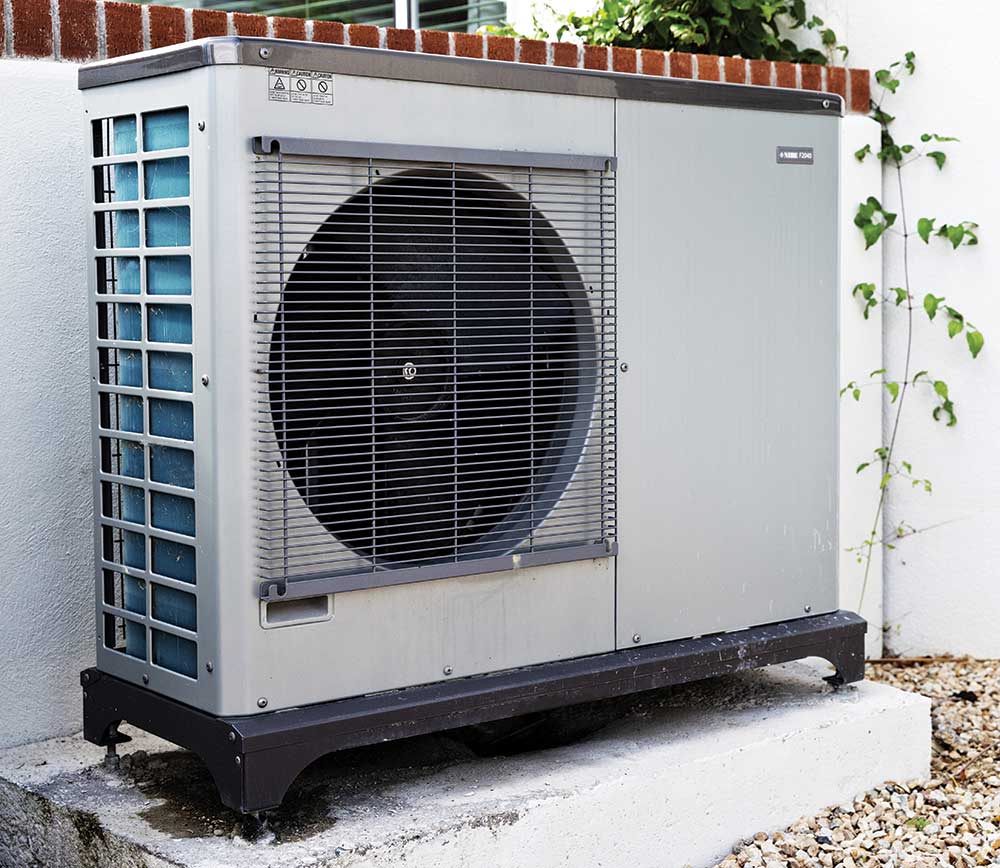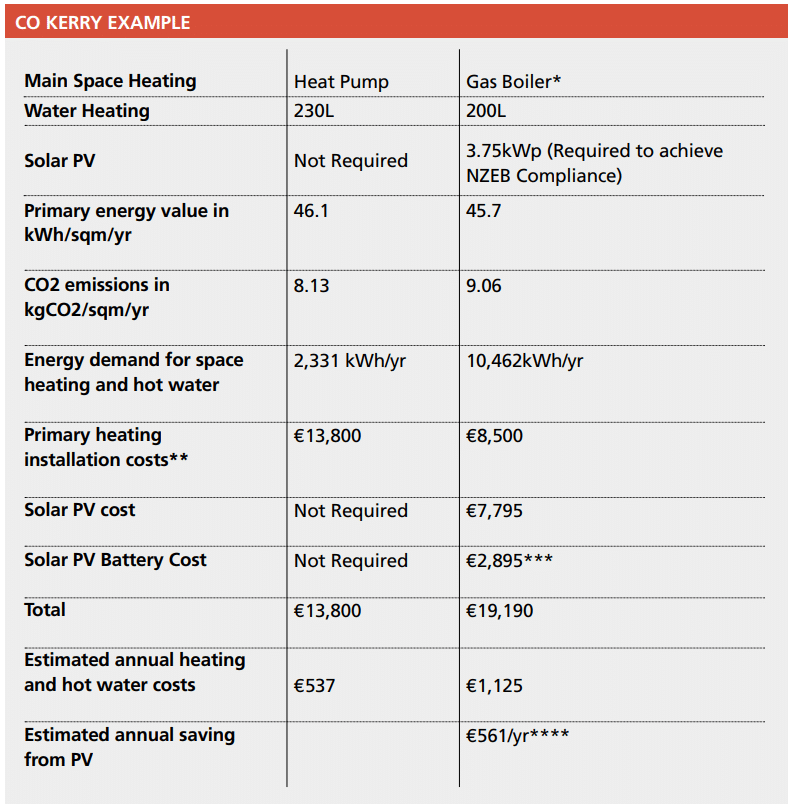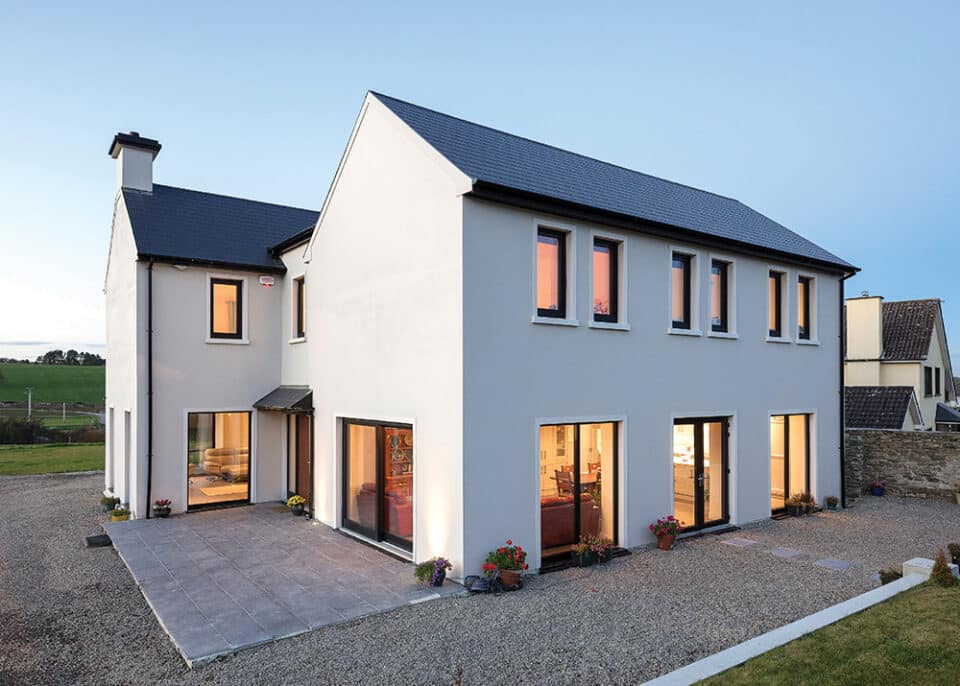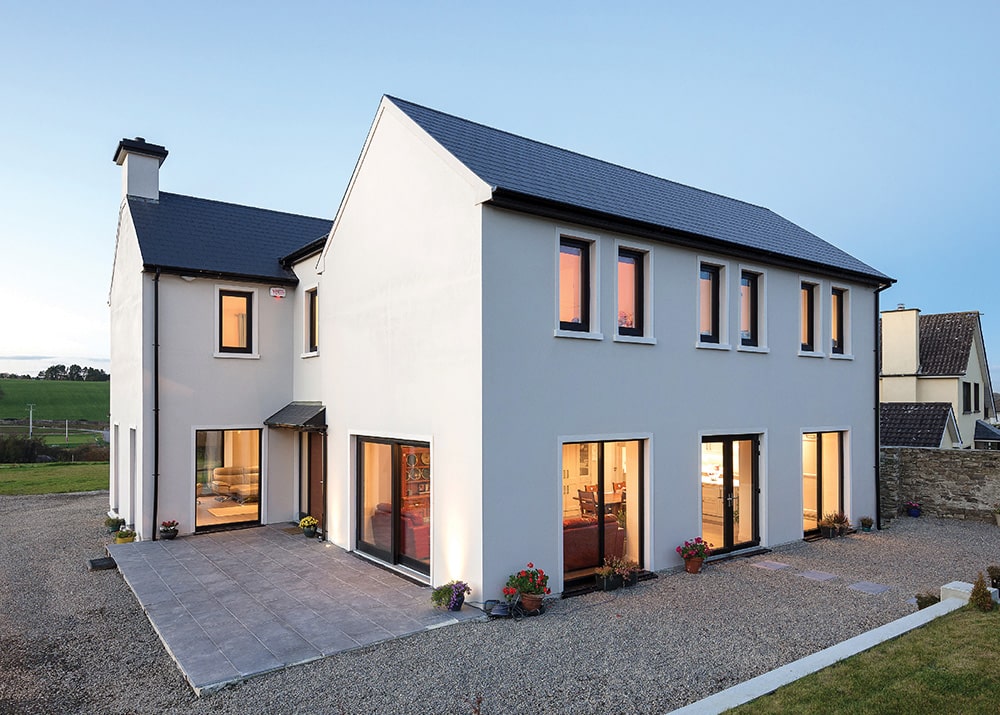John Brosnan of Energywise takes out the calculator to compare how heat pumps compare to gas boilers under the new Part L, including:
- What the new ROI building regulations in relation to energy efficiency have to say for heating systems
- What the options are and how they compare environmentally
- Energy calculation details of a 182sqm house in Co Kerry comparing heating pump versus gas with PV
- Cost of heat pump versus gas and PV
- Full list of calculation assumptions and links to sources
The aim of the new building regulations is to reduce the energy consumption in new and existing dwellings to nearly zero, to reduce CO2 emissions and to increase the amount of renewable energy produced and used within the dwelling.
When building a new home most people consider the option between a gas boiler with PV (photovoltaic solar panels that generate electricity) or a standalone heat pump.
So, which is cheaper and how do heat pumps and gas compare?
To start off, fossil fuels are not banned from being installed in new builds or renovations just yet. The issue is that for many dwellings it can be extremely difficult to get a house compliant using oil/gas due to the high CO2 emissions associated with burning fossil fuels.
With oil, the risk is that at the design stage the dwelling is likely to only just meet compliance so any small change, e.g. making a window bigger, could make the house non-compliant.
Also, 20 per cent of the energy used in the home must come from renewable resources. With oil or gas you would typically achieve this by installing solar (thermal or photovoltaic). The most popular heating and hot water option is to install a heat pump because when well designed, it meets this renewable energy requirement.
I’ve put together an energy calculation to compare two identical 182sqm dwellings in Causeway, Co Kerry which only differ in the type of heating system installed.
They both have underfloor heating, very good airtightness (0.25AC/h), mechanical ventilation with heat recovery, and a wood burning stove as the secondary heating system. Both achieve a building energy rating of A2 consuming roughly the same amount of primary energy per year per sqm; the gas boiler’s high demand is offset by the PV panels.
I would advise people to go with the heat pump and make provisions to install PV for when funds allow, especially as the government is in the process of setting up a system to pay for exported electricity which will eventually help negate the need for a battery.
Notes
* The gas boiler is LPG as there is no natural gas in the area; I then added just enough solar PV to achieve the same rating (as close as possible) as the heat pump was giving us. The LPG costs include standing charges for the
LPG tank; natural gas would be cheaper (natural gas = 6.32cent/kWh, oil = 7.96cent/kWh, bulk LPG = 10.75cent/ kWh).
** Includes boiler or heat pump plus hot water cylinder and accessories, underfloor heating, heating controls.
*** Solar PV Battery storage not essential for compliance but is advisory for larger PV systems as currently no feed in tariff for energy exported to the grid. Assuming panels south facing, 30 degree pitch with no shading.
**** From SEAI PV Payback Calculator (battery costs and benefits are excluded from this calculation). Other references: DEAP3 software, SEAI Domestic Fuel Cost Comparison (Electrical cost for Heat Pump Delivered Energy = 23.05c/kWh, LPG Gas cost for Gas Boiler Delivered Energy = 10.75c/kWh). Costs include VAT. Figures provided are estimated using certain assumption and can vary depending on the dwellings user(s) and fuel costs.























